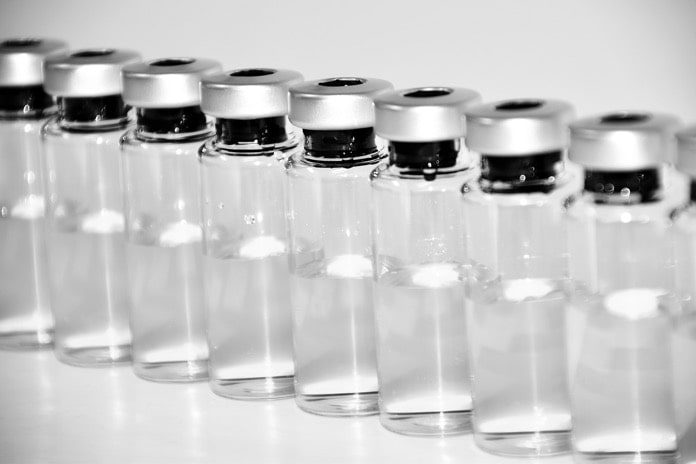In a recent study published in The Journal of Infectious Diseases, researchers gained insight into HPV vaccine coverage among teenagers.
Human papillomavirus (HPV) is a sexually transmitted viral infection. There are over 100 varieties of HPV and it is considered to be the most common sexually transmitted infection (STI). HPV is contracted via sexual contact; however, it can also be contracted via skin-to-skin contact. Sexual intercourse is not required to contract HPV. HPV can go away on its own, but if it does linger in the body, it can cause a variety of health concerns. These health concerns include cervical cancer and other cancers, genital warts, and warts in other areas of the body.
In a study published by The Journal of Infectious Diseases, researchers state that the Advisory Committee on Immunization Practices encourages an introduction to the HPV vaccine at 11 or 12 years of age. This is so that the adolescent can be fully vaccinated by age 13. If an adolescent receives the vaccination before their 15th birthday, only two doses are required. If they receive the HPV vaccine after the age of 15, three doses are required for full immunization.
In 2016, only 43% of American adolescents were completely vaccinated against HPV. Statistics from The National Survey of Family Growth suggest that by age 15, over 10% of females and over 15% of males experience sexual introduction.
Researchers analysed data from a 2016 National Immunization Survey-Teen (NIS-Teen). The NIS-Teen randomly surveyed parents of adolescents (13 to 17 years old). This was completed via a randomized telephone call and was carried out in the U.S. If granted permission by the parents, the NIS-Teen surveyors contacted the adolescent’s healthcare provider(s) for vaccination history.
After receiving vaccination histories, the surveyors labelled adolescents by an HPV vaccination status. Factors were reviewed such as, which state they resided in, how many healthcare providers they had, race/ethnicity, age, sex, and poverty status. Out of 43,071 parents, 20,880 allowed surveyors to contact healthcare providers. Researchers only analysed data from those who lived in the U.S. and the District of Columbia, for a total number of 20,475 parents.
Less than 50% of teenagers received a complete HPV vaccination
Findings revealed that fewer than 50% (43.4%) of adolescents aged 13 to 17 had received a complete HPV vaccination. Furthermore, the amount of adolescents completely vaccinated against HPV by the time they were 13 was just over 15% (15.7%). Further analyses showed that 34.8% of adolescents had received a full HPV vaccination by the age of 15.
Female adolescents were more likely than males to be caught up on the HPV vaccine. Hispanic adolescents showed to have higher rates of vaccination than any other race or ethnicity. Adolescents of a lower household poverty status showed higher rates of vaccination than adolescents of other household statuses.
Interestingly, if adolescents had more than one healthcare provider, they were more likely to not be up-to-date on the HPV vaccine. This could be due to not having a specified “home” when it came to medical concerns. States such as Delaware, Hawaii, Louisiana, New Mexico, and Rhode Island showed the highest rates for complete HPV vaccinations. Whereas states such as Arkansas, Indiana, Mississippi, South Carolina, Texas, and Wyoming showed the lowest numbers for complete HPV vaccinations.
High concern regarding incomplete HPV vaccines
After reviewing data, researchers are highly concerned that HPV vaccines are not being introduced and completed by the recommended ages. If an adolescent receives their HPV vaccine before experiencing sexual activity, the vaccine will be more effective than if they received it afterward.
The HPV vaccine is not the only recommended vaccine at these early ages. Also recommended are the acellular pertussis vaccine, diphtheria vaccine, tetanus vaccine, and quadrivalent meningococcal conjugate vaccine. Receiving one or more of these vaccines increases the chances of an adolescent receiving more, or all.
Limitations of this study included a limited sample size. Also, the response rate of randomized calls within the NIS-Teen was low. Though there were some limitations, this was a strong study as it covered the U.S. and the District of Columbia. The low rates of HPV vaccine completion are definitely a concern. More studies on this topic will reveal HPV vaccine coverage in other areas, and will hopefully educate the public on its importance.
References
- Bednarczyk, Robert A., Ellingson, Mallory K., and Omer, Saad B. Human Papillomavirus Vaccination Before 13 and 15 Years of Age: Analysis of National Immunization Survey Teen Data. The Journal of Infectious Diseases. 2019. 1-5. Online.
- Human papillomavirus infection. (2019) https://www.healthline.com/health/human-papillomavirus-infection#symptoms.
- HPV vaccination rates remain critically low among younger adolescents in the US. (2019) https://www.eurekalert.org/pub_releases/2019-01/idso-hvr011619.php



